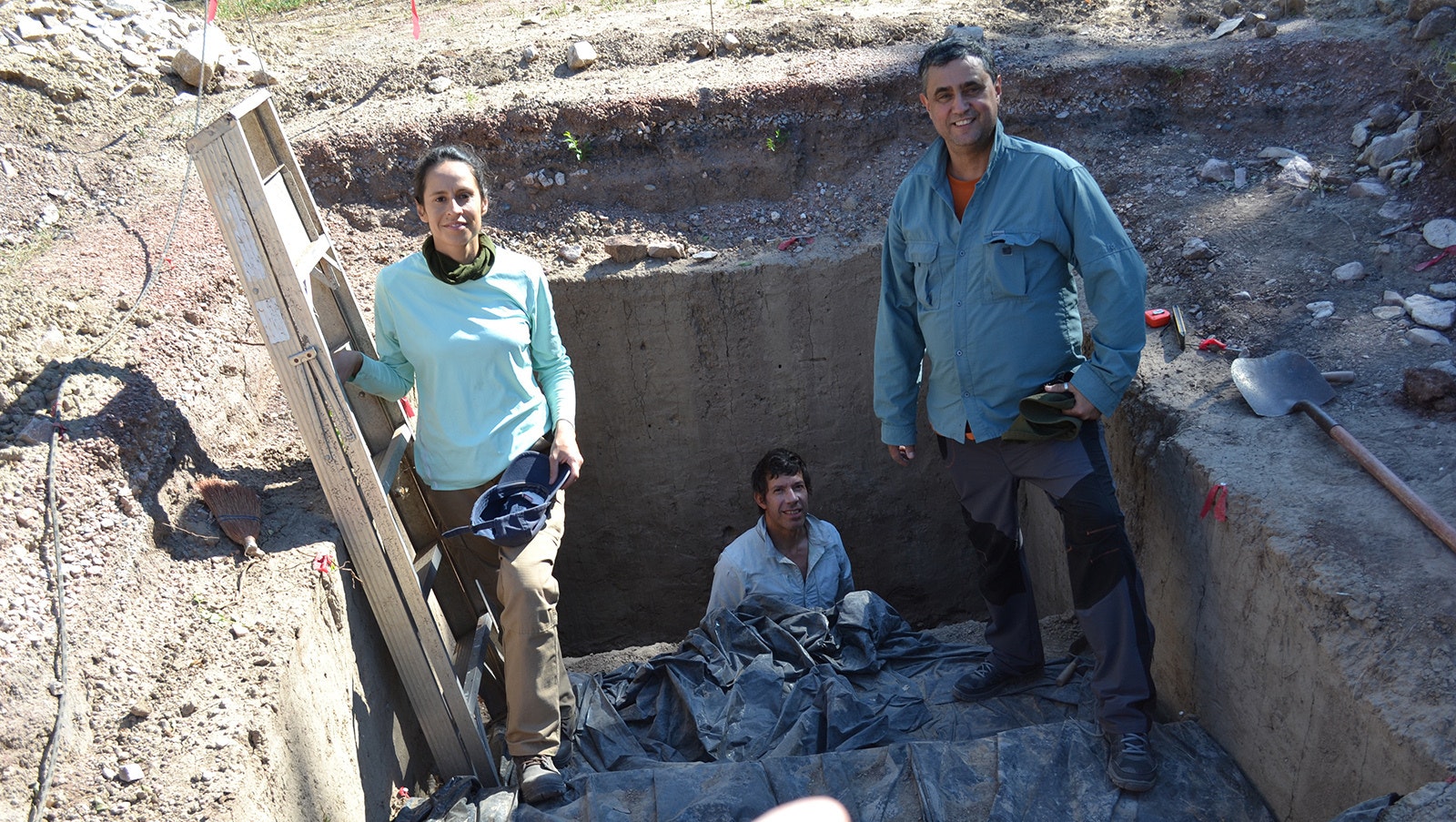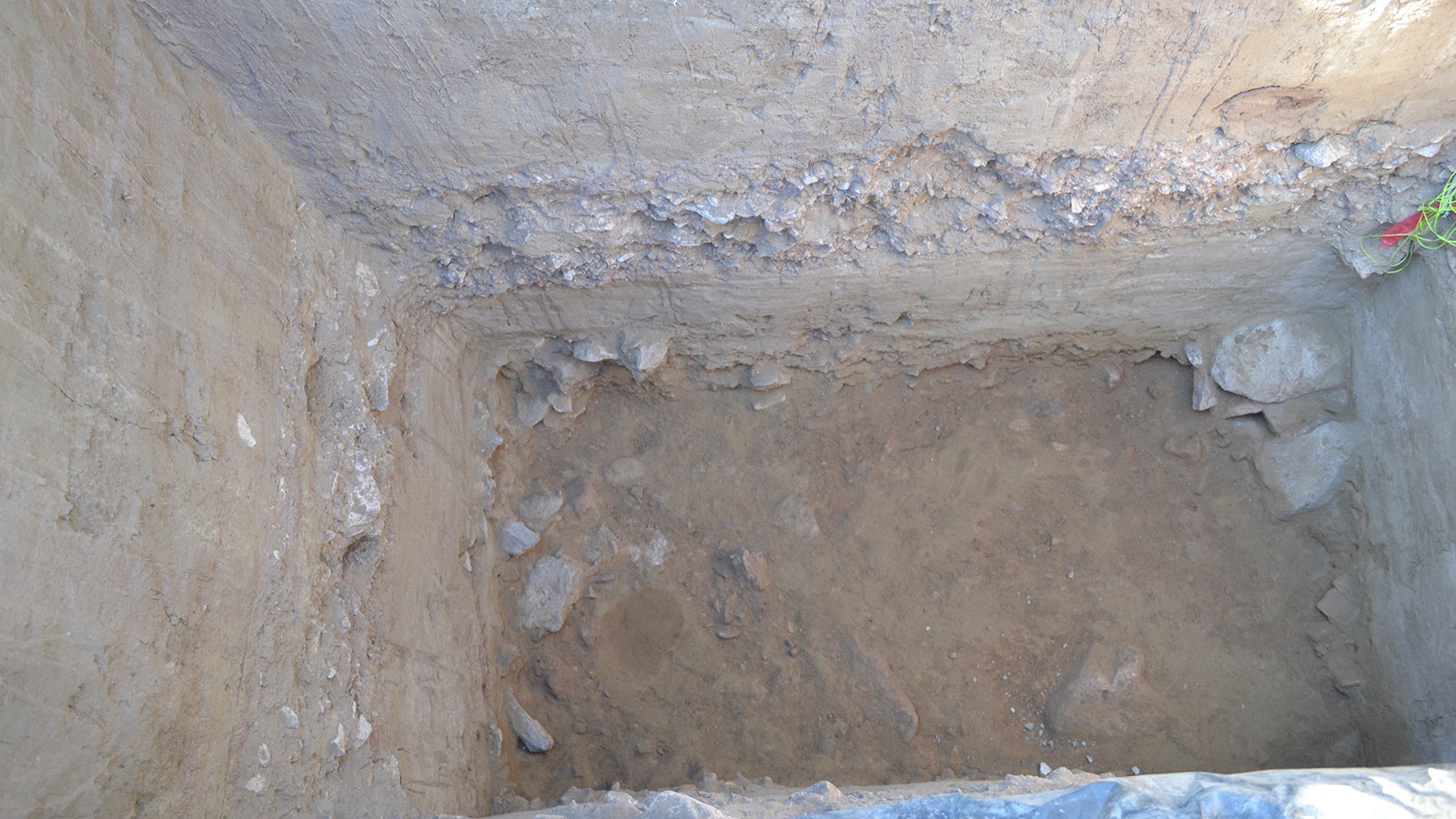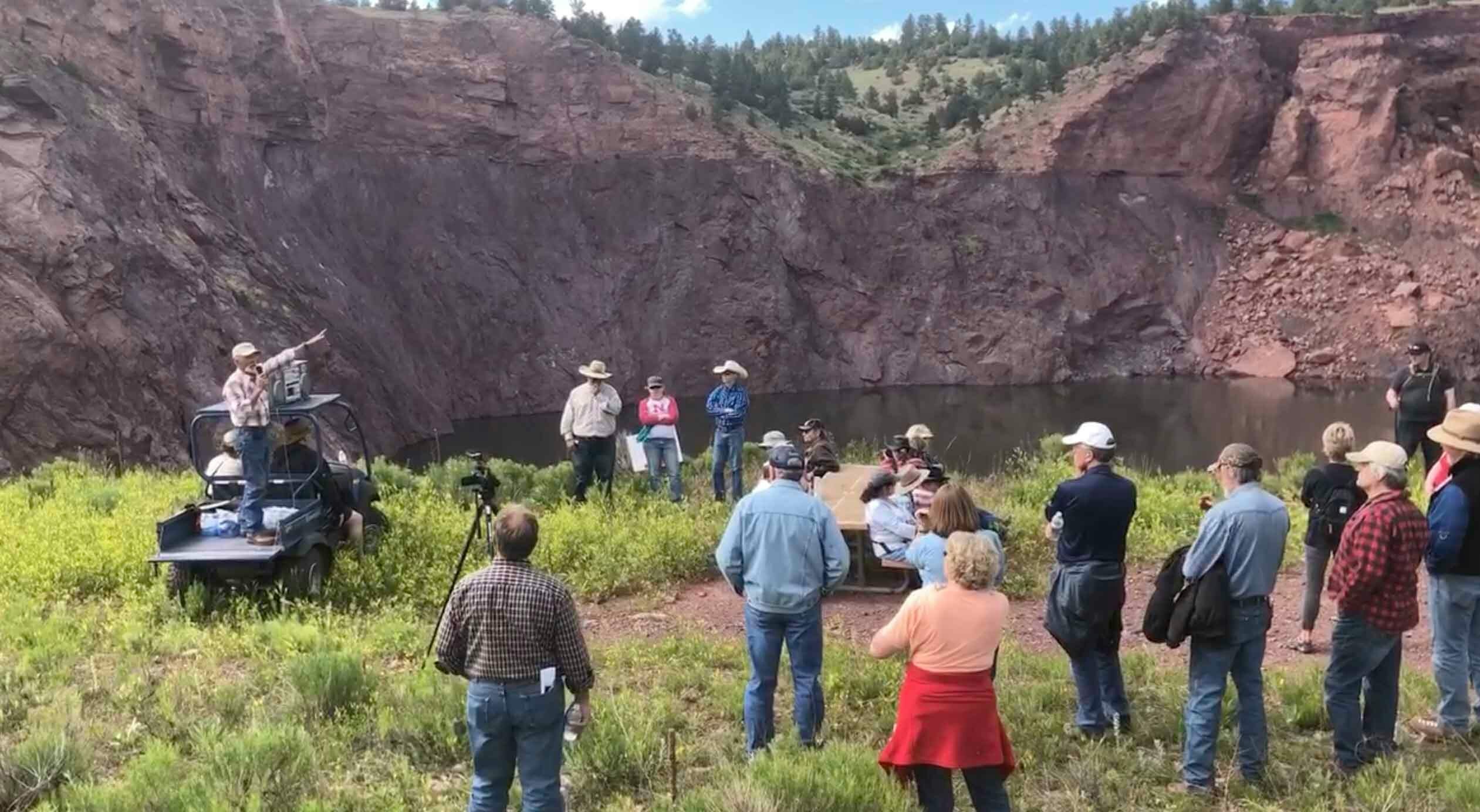Researchers from around the world were at the Powars II Paleoindian archaeological site this summer, where another astonishing discovery has been made.
They’ve found another red ochre mine, potentially older than the one already discovered at the site.
The test was small and many questions remain, but so far it appears to have many artifacts waiting to be found, and its discovery increases the odds of a major archaeological breakthrough.
The second ochre mine was found as a result of some test digging, archaeologist George Zeimens told Cowboy State Daily. The Sunrise Historic and Prehistoric Preservation Society (SHAPPS) has some money to place a building over the archaeological site to protect it.
But first, Zeimens decided a little test digging was wise to determine the best location for the structure’s footings.
“This was a very fortuitous thing,” Zeimens said. “We were actually hoping there’d be nothing there so we’d have an idea what size this new building’s going to have to be. But, lo and behold, we got into a real treasure trove of artifacts and information.”

Sunrise Points Predate Clovis
Powars II is one of the oldest paleoindian North American red ochre mines that’s been found to date, and the site near Sunrise, Wyoming, has already yielded artifacts that are 14,000 years old. That makes them the oldest artifacts in the state for cultural materials, Zeimens has told Cowboy State Daily.
“There are other sites in North America with old dates like that too, but this is the first time (Wyoming) has found them,” he said.
Fourteen thousand years old is particularly significant in the archaeological world because it would predate Clovis, which researchers have long believed is the oldest paleoindian culture on the North American continent.
Clovis points are distinctively fluted projectiles first found in Clovis, New Mexico, along with the bones of extinct mammoths that once stood 14 feet high and weighed 8 to 10 tons. Experts believe the creatures would have eaten 700 pounds of vegetation in a single day.
Clovis man clearly hunted the mammoths, which had corresponding marks on their bones, connecting the points to their deaths.
But little else is known about Clovis man. Cultural materials like clothing are rarely preserved, so the main diagnostics are the distinctive, fluted stone points they made.
Archaeologists have found about 80 different stone points at Powars II, among them a few that are somewhat different than Clovis. These have been named Sunrise points.
One theory is that these Sunrise points could be precursors to Clovis. But there is much research to do to confirm that. If it pans out though, it would be an exciting, ground-breaking find worldwide, coming from Wyoming.
“There are no good dates yet on that projectile point style,” Zeimans has said. “There are other places it’s been found. It’s been found in North America, mainly up in Montana, North Dakota and southern Canada, but nobody has a firm date at this point.”
Finding a new area, and a potentially older red ochre mine, increases the odds of finding something diagnostic. That has Zeimens and the other archaeologists very excited that they may yet be able to determine the significance of the Sunrise points.

‘We Just Discovered Some Amazing Stuff’
John Voight, who owns the Powars II archaeological site, told Cowboy State Daily this has been an exciting summer and he’s pleased with all the progress being made at this special location.
“It just surprised us every day again,” he said. “You know we had archaeologists form Uruguay and, gosh, Brazil, Germany — all over — here. We averaged about eight to 10 archaeologists for about two weeks, and boy did we have a good time, and we just discovered some amazing stuff.”
In addition to the discovery of the new and potentially older red ochre mine, digging just in front of the YMCA has continued. The stratification there is less disturbed than the mining location, Zeimens has told Cowboy State Daily.
One of the items found there has been dated to 13,700 years, and scientists haven’t yet hit the bottom of the layers of time they are painstakingly digging through.
“We haven’t yet found a verifiable point there,” Voight said. “But we have found flakes and tools and bones and things like that. Fire pits, you know, and they’re going to go deeper. It’s kind of fascinating.”
Undisturbed layers of earth will be particularly important in figuring out the significance of the Sunrise points. Each layer that’s deposited is like a layer of frozen time that archaeologists can use to nail down a particular sequence of points, and by extension, some of the history at the prehistoric site.
“It’s all been fantastic (this summer),” Voight said. “These archaeologists we have are world-class, and it’s fun to sit around and listen to them talk at night.”
The archaeologists, while they were here, put on a humanities program that attracted around 60 people from the surrounding communities, Voight added.
“They gave presentations about what they’re studying in South America,” Voight said. “And how it compares to what we’re studying up here for peoples of nearly, you know, possibly about the same time period.”
Zeimens said he’s thinking about going to Brazil this winter, a kind of informal research exchange program, to learn from what’s being done there.
“They’ve got some of the same problems we have here,” Zeimens said. “You know, when was the continent populated? And where are these people from? And, at this point in time, it looks like both were populated about the same time.
“So, it’s good for them to come up here, and I think I’m going to go down there to just work. We’re collaborating on this kind of research with them, and it’s just great.”






